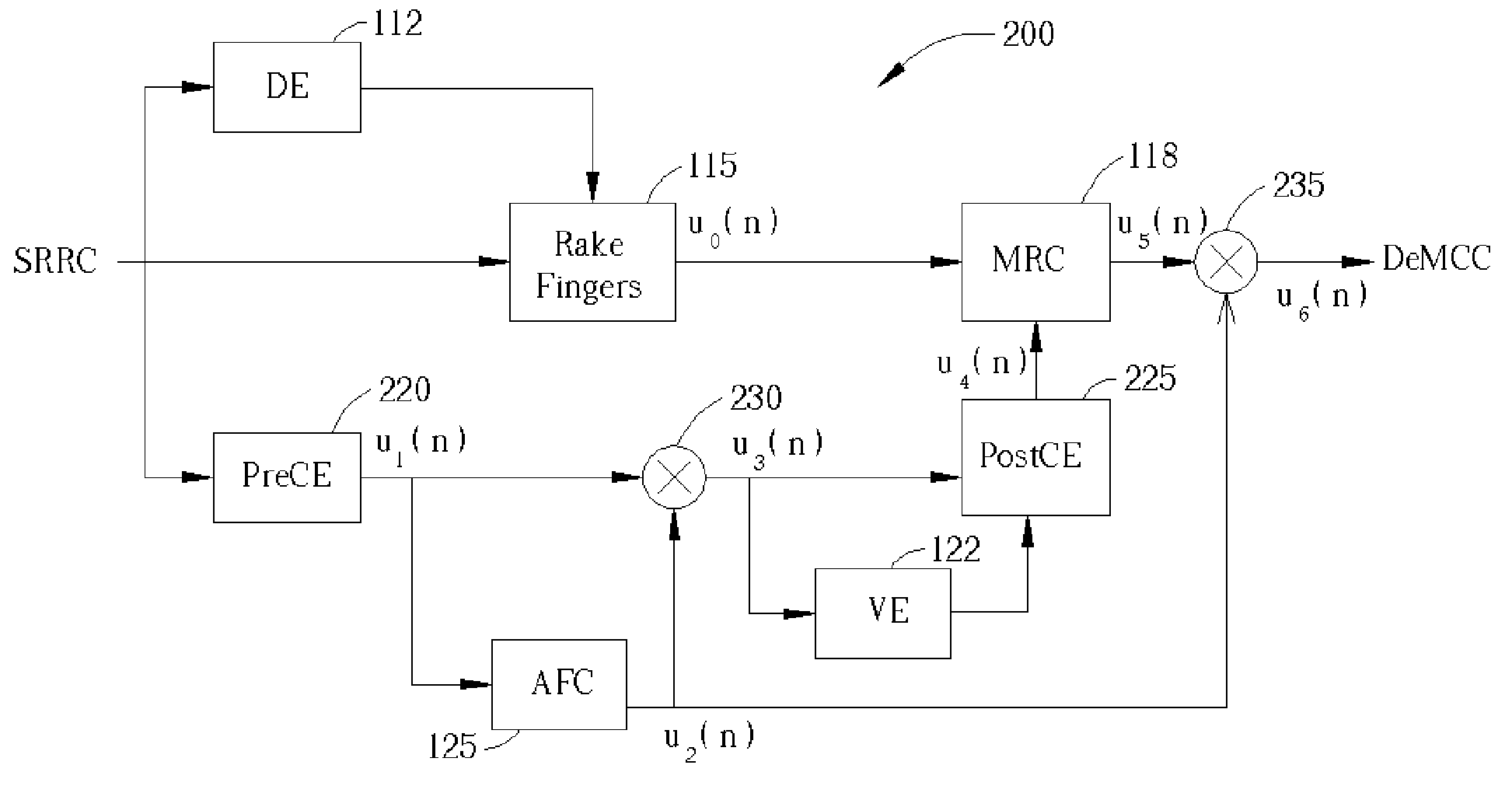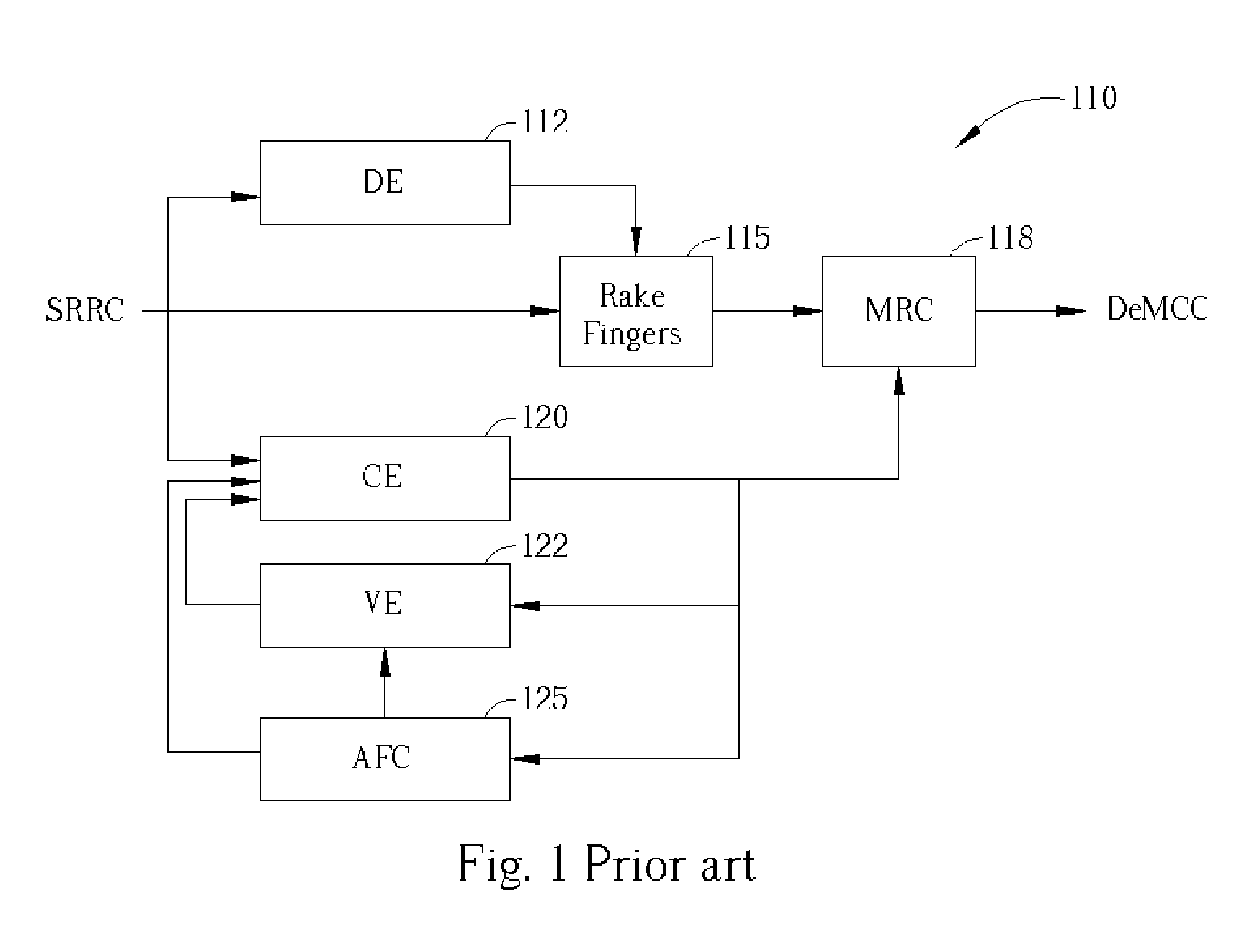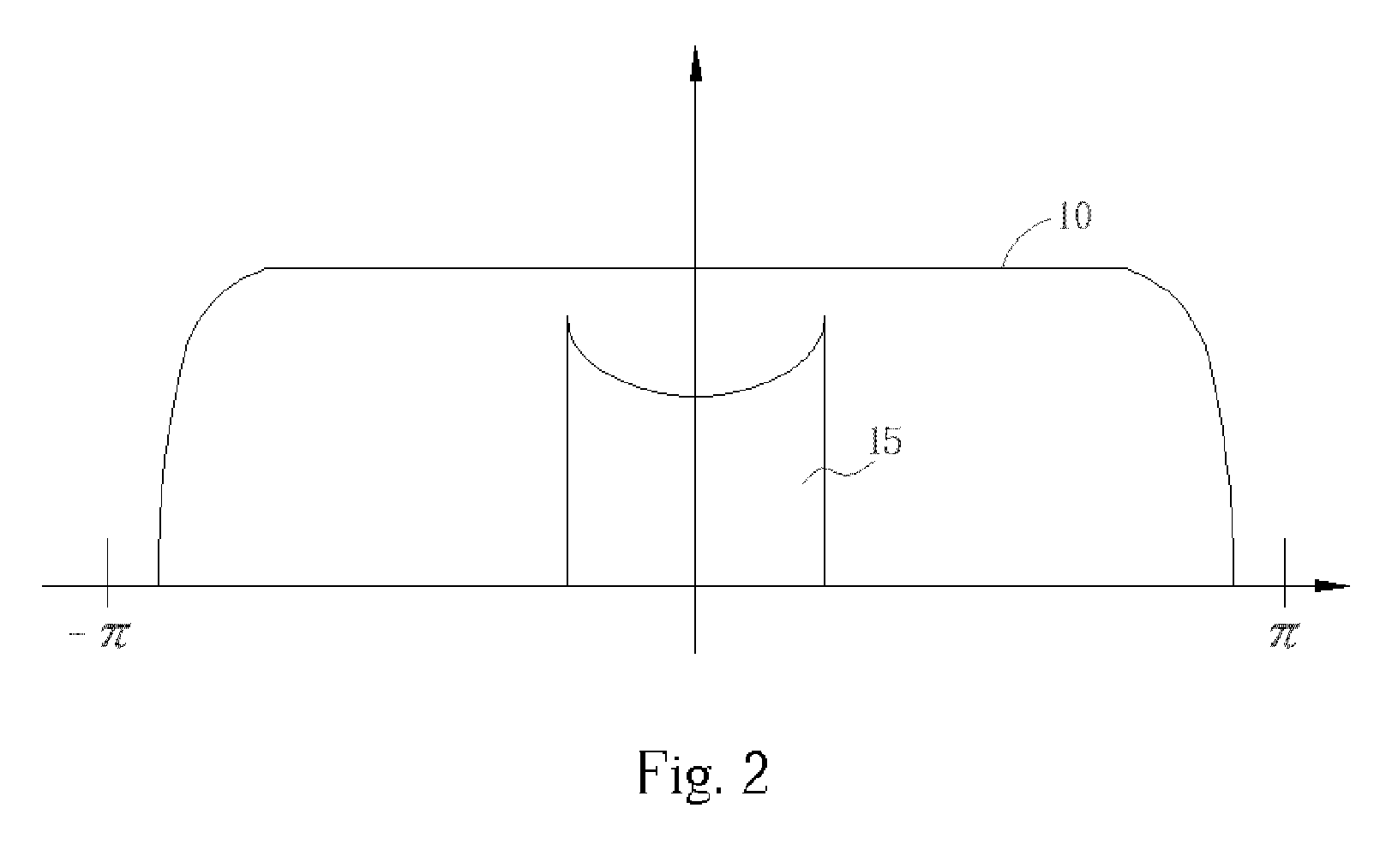Signal demodulation in a mobile receiver
a mobile receiver and signal demodulation technology, applied in amplitude demodulation, digital transmission, substation equipment, etc., can solve the problems of loss of signal strength and the entire bandwidth, and achieve the effect of improving performance and improving performance in a 3gpp wireless communications system
- Summary
- Abstract
- Description
- Claims
- Application Information
AI Technical Summary
Benefits of technology
Problems solved by technology
Method used
Image
Examples
Embodiment Construction
[0022] The present invention discloses an architecture for a WCDMA receiver in which the dependencies of different functional modules are arranged to allow proper tailoring of the Channel Estimation (CE) modules bandwidth. According to the present invention, the CE is divided into two parts, a PreCE and a PostCE. The PreCE is independent of a Velocity Estimation (VE) module and the Automatic Frequency Control (AFC) while the PostCE depends upon the output of the VE and the AFC.
[0023] A block diagram of the disclosed WCDMA receiver 200 is illustrated in FIG. 6. The WCDMA receiver 200 comprises the Delay Estimation (DE) module 112, the Rake Fingers module 115, the Maximum Ratio Combining (MRC) module 118, the VE module 122, and the AFC module 125 of the prior art receiver shown in FIG. 1. However, the receiver 200 further comprises a PreCE module 220, a PostCE module 225, a first mixer 230, and a second mixer 235.
[0024] An channel complex gain signal from a Square-Rooted-Raised-Cosi...
PUM
 Login to View More
Login to View More Abstract
Description
Claims
Application Information
 Login to View More
Login to View More - R&D
- Intellectual Property
- Life Sciences
- Materials
- Tech Scout
- Unparalleled Data Quality
- Higher Quality Content
- 60% Fewer Hallucinations
Browse by: Latest US Patents, China's latest patents, Technical Efficacy Thesaurus, Application Domain, Technology Topic, Popular Technical Reports.
© 2025 PatSnap. All rights reserved.Legal|Privacy policy|Modern Slavery Act Transparency Statement|Sitemap|About US| Contact US: help@patsnap.com



